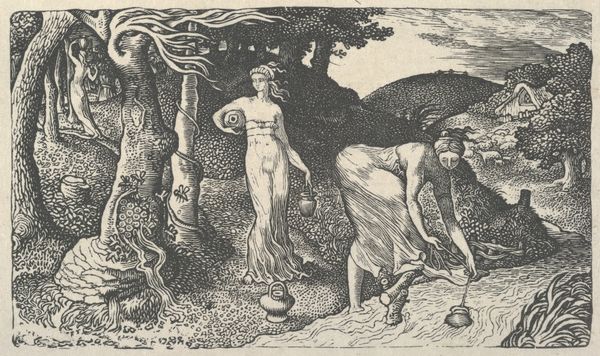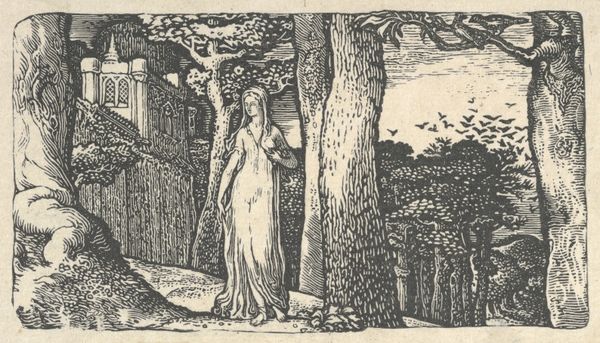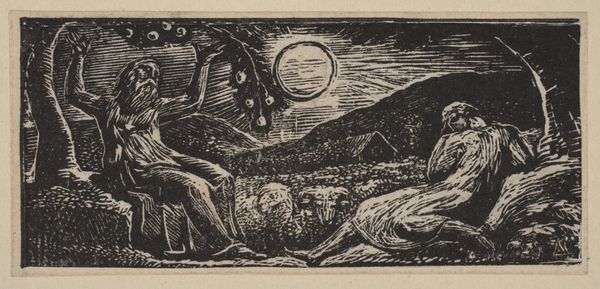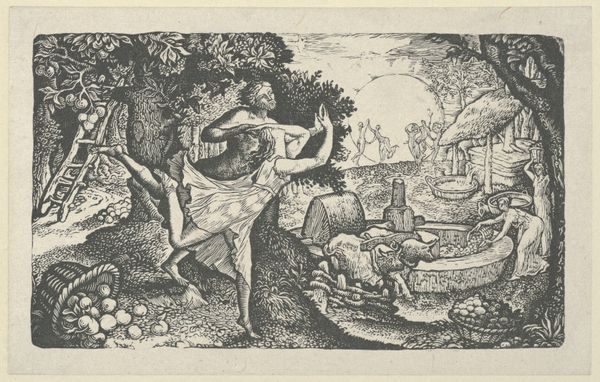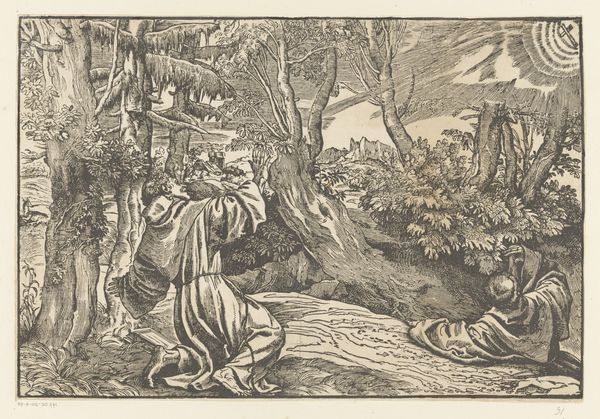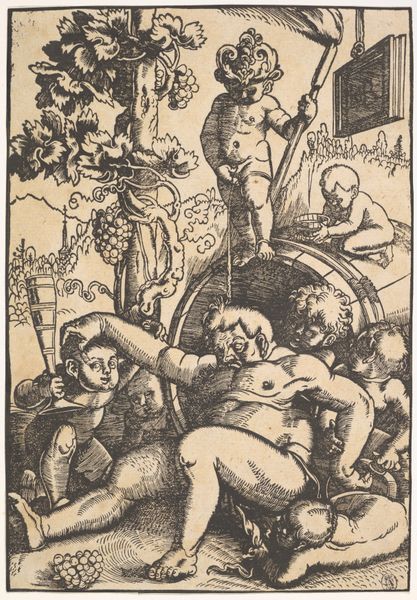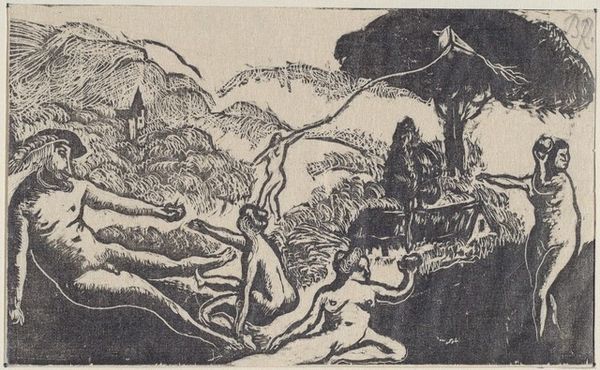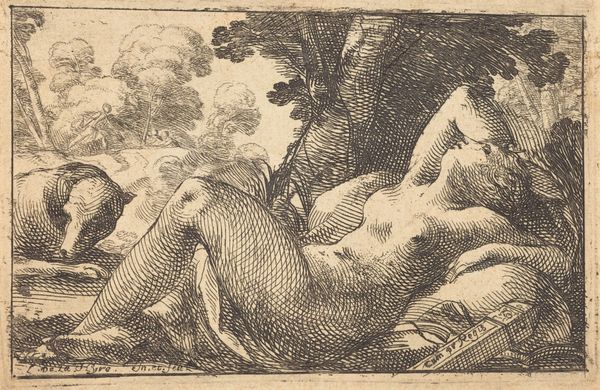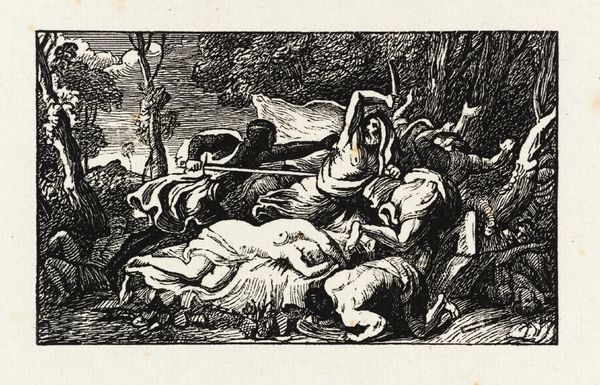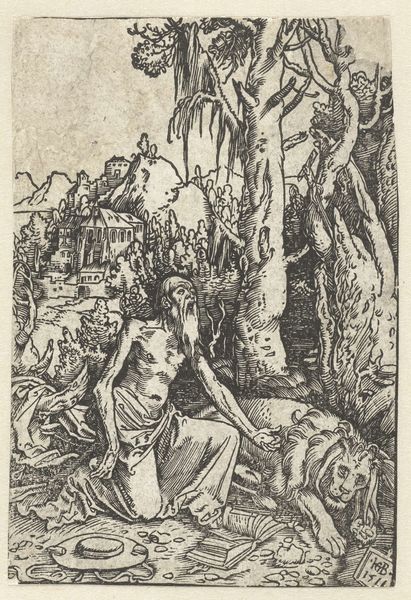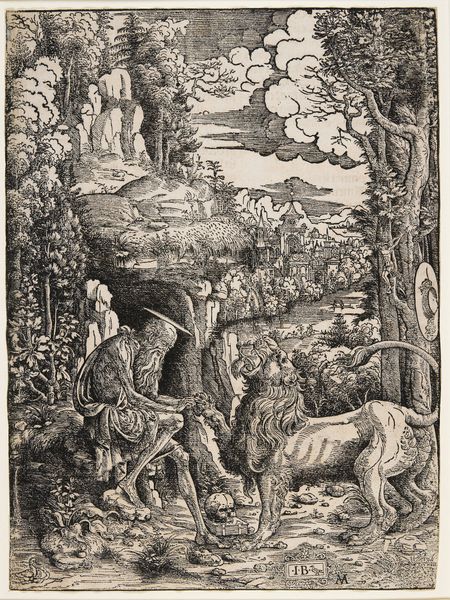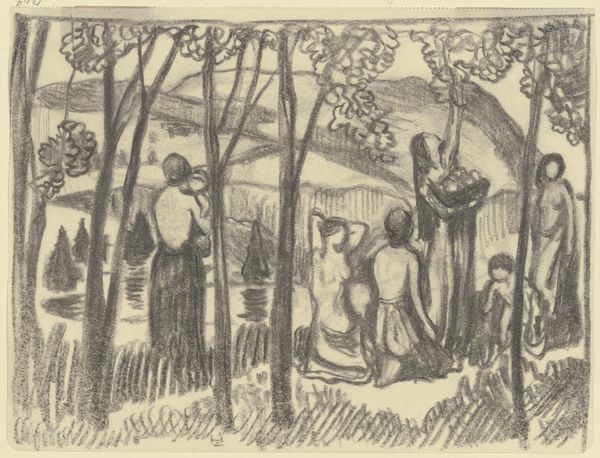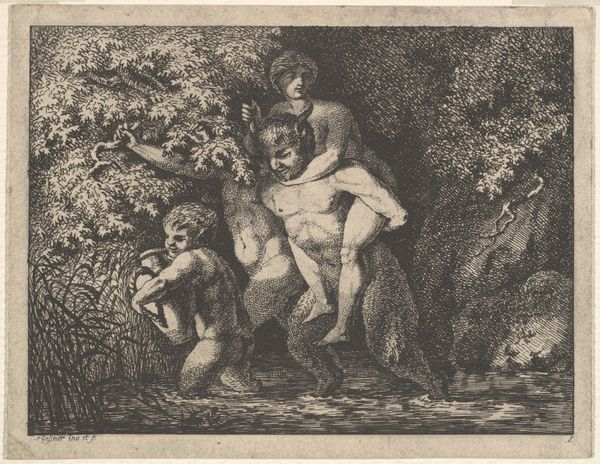
Ideal Pastoral Life (reproduced for Calver's "Memoir") 1904
0:00
0:00
Dimensions: Image: 1 11/16 x 3 in. (4.3 x 7.6 cm) Sheet: 8 5/8 × 5 11/16 in. (21.9 × 14.5 cm)
Copyright: Public Domain
Curator: Looking at Edward Calvert’s “Ideal Pastoral Life,” a print reproduced for Calver's "Memoir" in 1904, the use of line and light creates such a unique atmosphere. It's currently held in the collection of the Metropolitan Museum of Art in New York. Editor: It feels like stepping into a dream, doesn’t it? A soft, drowsy kind of dream where everything is rendered with the deepest contrasts, like a woodcut illustrating a forgotten myth. Curator: The medium, ink on either drawing or print—creates such strong contrasts. Considering its time, let's consider Calvert's access to resources, his studio setup. Prints at that time democratized art; this piece could reach a wider audience than a painting. What labor went into this distribution? Editor: Oh, absolutely! The social reach speaks volumes. And the labor, the hand involved...it feels like a direct imprint of Calvert’s soul, those sharp, deliberate lines hinting at a landscape both serene and subtly charged, kind of resonating, don’t you think, with a Blake-like intensity, an echo of Romanticism's yearning for nature and the ideal? Curator: I see your Blake comparison. He also tapped into these utopian landscapes, a retreat from the industrializing world. The sheep here almost look like clumps of wool. Notice the lines in the trees; the way they form, are not trying to capture reality in a mimetic way, but more how materials are placed to make certain affects. What materials did he have on hand and why? Editor: Precisely. It's the economy of expression that really moves me—like a haiku captured in ink. What can you evoke with the most efficient mark? The sensuality of it all: the smooth skin of the shepherds against the woolly sheep...it's a study of textures and desires. Is this the art equivalent of free-range living, yearning for that simpler mode of material consumption? Curator: I like that notion of 'free-range' living you raised. Perhaps there's something to glean, a sense of resisting the mass production era— advocating a more artisanal approach not just to art making, but living as well. Editor: Absolutely, it feels incredibly vital now. It invites you into its idyllic dreamscape, to just linger and reflect... Curator: ...And to consider the context that enabled this particular type of production, it might spur an awakening toward the world we're actively constructing for others. Thank you, I like what the image and conversation stirred.
Comments
No comments
Be the first to comment and join the conversation on the ultimate creative platform.
